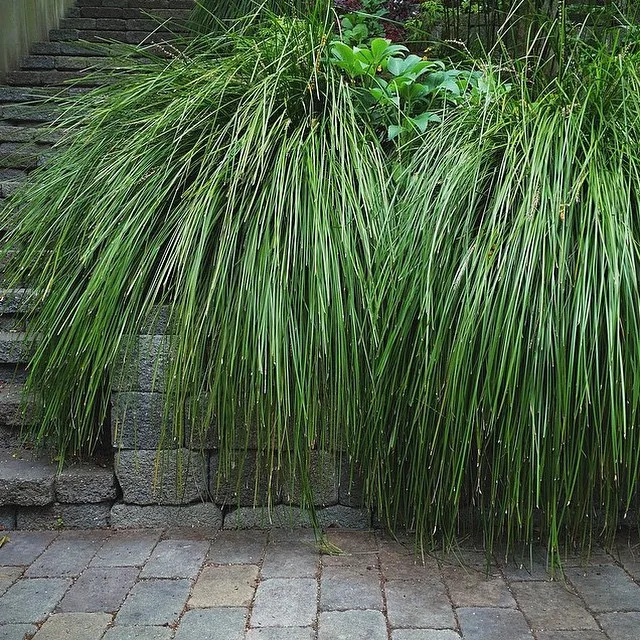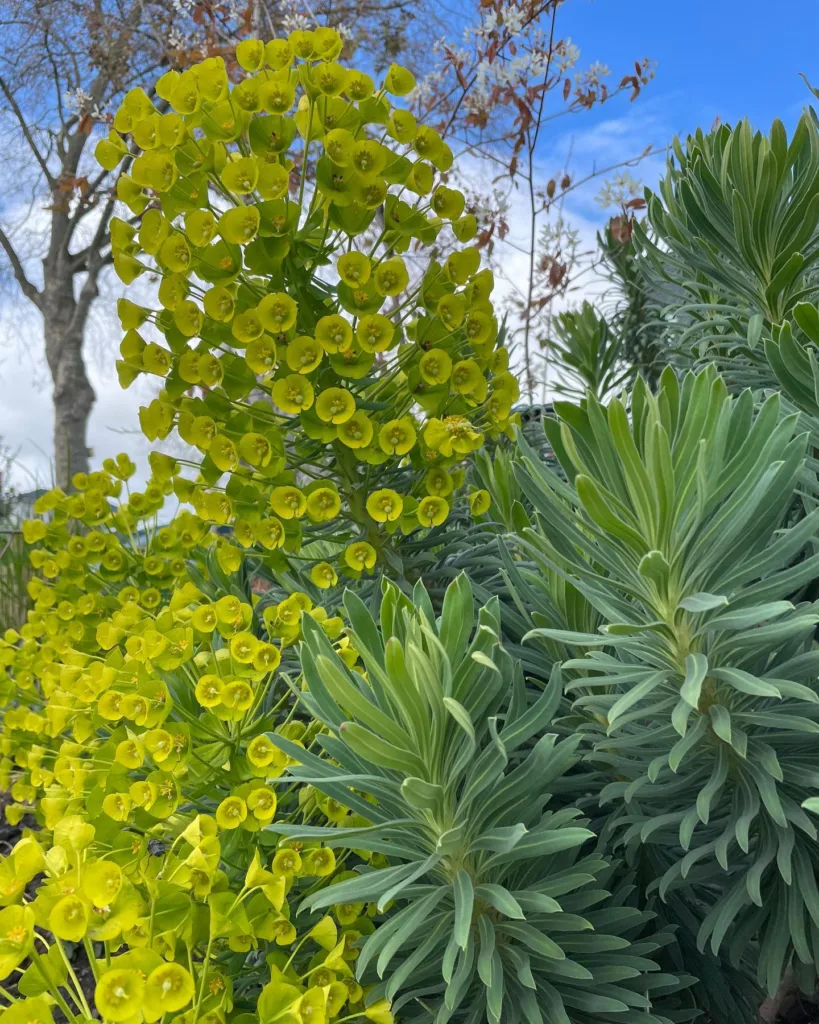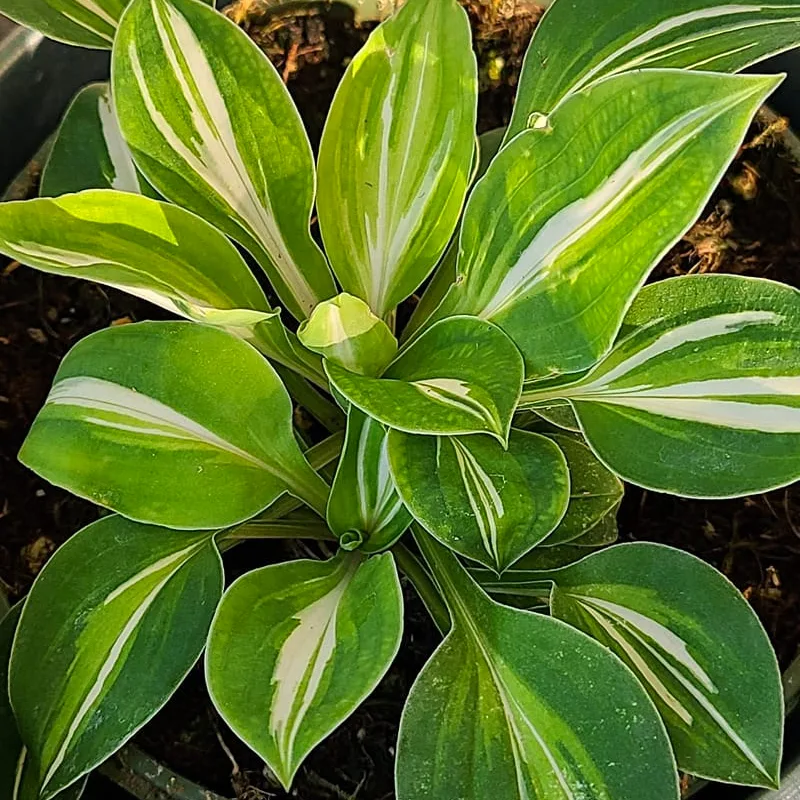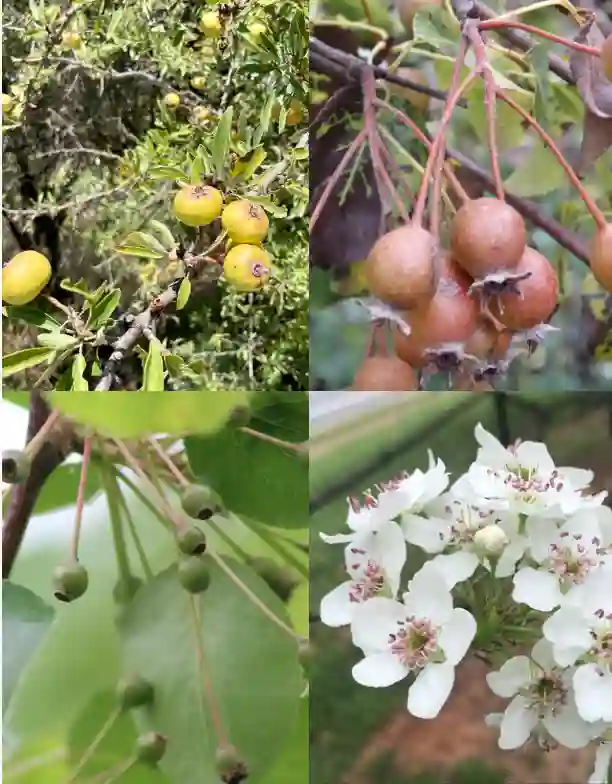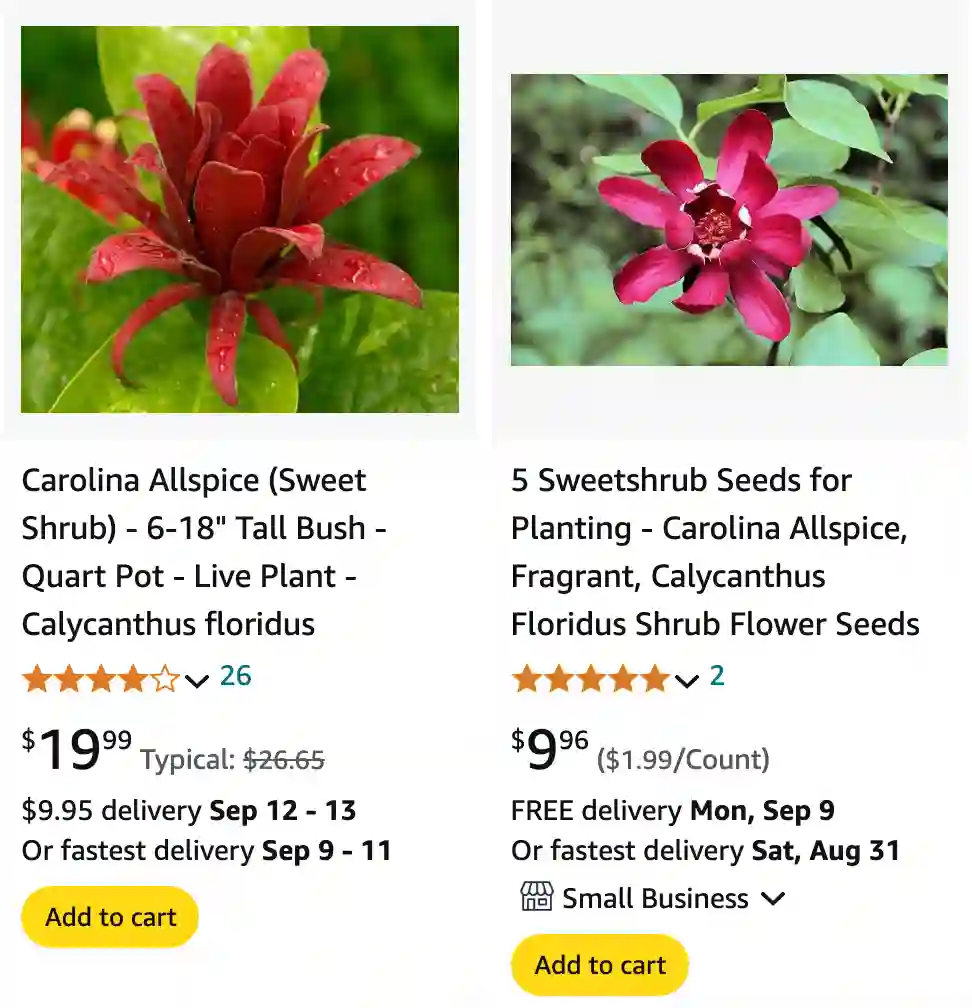
FAQs About Calycanthus Floridus
When I first encountered Calycanthus Floridus, also known as Sweetshrub, I was struck by its unique charm. This deciduous shrub, native to the southeastern United States, including Georgia, has piqued my curiosity and interest. Over time, I’ve gathered a lot of information about it and compiled answers to some frequently asked questions. Here’s everything you need to know about this fascinating plant.
4 Species in Genus Calycanthus
What Is Calycanthus Floridus?
Calycanthus Floridus, commonly known as Sweetshrub or Carolina Allspice, is a deciduous shrub known for its fragrant, spiced-scented flowers. The plant typically grows to about 8 to 12 feet tall and wide, with dark green, glossy leaves that turn yellow in the fall. The flowers are reddish-brown and have a unique aroma reminiscent of fruit and spice, hence the name “Sweetshrub.”
How to Grow Calycanthus Floridus
Growing Calycanthus Floridus is a rewarding experience. This plant thrives in USDA Hardiness Zones 4 to 9, which means it’s well-suited for a range of climates. It prefers well-drained soil and can tolerate a variety of soil types, including clay and sandy soils. Full sun to partial shade is ideal for its growth, but it will also do well in more shaded conditions.
To start growing Sweetshrub, choose a location with good air circulation to prevent fungal issues. Dig a hole that’s twice the width of the root ball and just as deep. Mix the native soil with compost to enhance its fertility. Plant the shrub at the same depth it was in the nursery container, and water it thoroughly. Mulching around the base can help retain moisture and control weeds.
Is Calycanthus Floridus Deer Resistant?
Yes, Calycanthus Floridus is considered deer resistant. While no plant is completely deer-proof, Sweetshrub’s aromatic foliage and its somewhat tough texture make it less appealing to deer. In my garden, I’ve found that deer tend to leave it alone, preferring other more palatable options.
Is Calycanthus Floridus Edible?
Calycanthus Floridus is not known for its edibility. While some parts of the plant are used in traditional medicine, such as the flowers for their aromatic properties, it’s generally not consumed as food. The shrub is better appreciated for its ornamental value and fragrance rather than its potential culinary uses.
Is Calycanthus Floridus Native to Georgia?
Yes, Calycanthus Floridus is native to Georgia and the southeastern United States. It’s well-adapted to the region’s climate and soil conditions. In its native habitat, it thrives in moist, rich soils and can often be found in woodlands and along stream banks. This regional adaptability makes it a fantastic choice for native plant gardens.
Is Sweetshrub Calycanthus Floridus Invasive?
Calycanthus Floridus is not considered invasive. It’s a native plant, which means it generally behaves well within its natural range and does not spread aggressively like some non-native species. However, like any plant, it can spread if not managed properly, so it’s good practice to monitor its growth and prune it as needed to keep it in check.
How to Care for Calycanthus Floridus
Caring for Sweetshrub involves a few basic practices. Regular watering is essential, especially during dry periods. However, avoid waterlogging the soil. Pruning is best done in late winter or early spring before new growth starts. Remove any dead or damaged wood and shape the plant to encourage a more attractive form.
Fertilizing is generally not necessary unless the plant shows signs of nutrient deficiency. If you choose to fertilize, use a balanced, slow-release fertilizer in early spring. Mulching around the base can help retain soil moisture and suppress weeds.
How to Propagate Calycanthus Floridus
Propagation of Calycanthus Floridus can be done through seed or cuttings. For seeds, collect them in the fall and stratify them by chilling them in the refrigerator for a few months before planting. This process helps to break the seed dormancy and improve germination rates.
For cuttings, take softwood cuttings in early summer and dip them in rooting hormone before planting them in a pot with well-draining soil. Keep the cuttings in a warm, humid environment until they develop roots.
What to Plant with Calycanthus Floridus
Sweetshrub pairs well with other shade-loving plants. In my garden, I’ve combined it with ferns, hostas, and shade-tolerant perennials like astilbes and heucheras. Its unique flowers and fragrance provide a lovely contrast to these plants, creating a multi-layered and textured garden space.
Can You Grow Calycanthus Floridus Indoors?
Growing Calycanthus Floridus indoors is challenging. It requires a lot of space to accommodate its size and needs ample light to thrive. While it’s best suited for outdoor gardens, if you have a large, well-lit indoor space, it might be possible to grow it in a large container, provided it receives sufficient light and air circulation.
Is Calycanthus Floridus Toxic?
Calycanthus Floridus is not known to be toxic to humans or pets. However, as with many plants, it’s best to avoid ingestion of any parts of the plant, as some individuals may experience mild digestive upset.
Benefits of Calycanthus Floridus
One of the primary benefits of Calycanthus Floridus is its delightful fragrance. The sweet-smelling flowers can add a pleasant aroma to your garden, especially in the spring when it blooms. Additionally, its attractive foliage and interesting flowers provide year-round interest and make it a valuable addition to a variety of garden settings.
Common Problems with Calycanthus Floridus
Common issues with Sweetshrub include susceptibility to fungal diseases, especially in overly moist conditions. To prevent these problems, ensure good air circulation around the plant and avoid excessive watering. Pests are less of a concern, but occasional issues with aphids or spider mites can occur. Regular inspection and treatment with appropriate insecticides or natural remedies can help manage these pests.
Compare with Other Shrubs
When compared to similar shrubs like the Viburnum or Spicebush, Calycanthus Floridus stands out due to its unique floral fragrance and distinctive flower shape. While Viburnum offers a broader range of flower colors and Spicebush provides a different type of spice scent, Sweetshrub’s specific aroma and look give it a unique place in the garden.
Calycanthus Floridus is a remarkable plant with its own set of unique attributes and needs. I hope this guide helps you in growing, caring for, and enjoying Sweetshrub in your garden.
If i die, water my plants!
